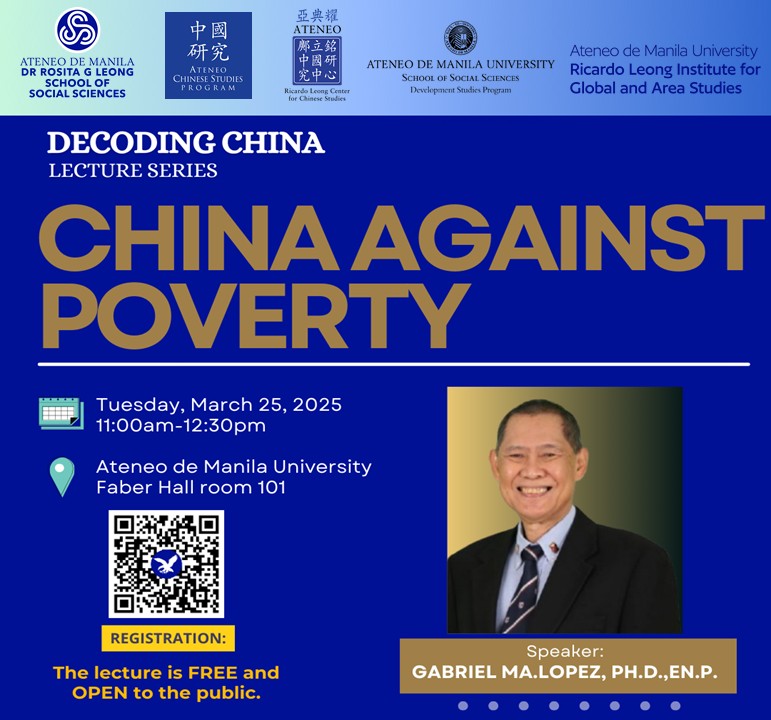Decoding China Lecture Series: China Against Poverty
ABSTRACT:
The People’s Republic of China declared its independence on October 1, 1949 after a long protracted war of liberation with colonial occupiers and corrupt feudal capitalist leaders. During its liberation China emerged as a ravaged and devastated nation, with widespread poverty and social problems all over.
The Chinese Communist Party, led by Chairman Mao Zedong initiated agricultural programs to advance food production to meet the needs of the population which faced many disastrous events, notably during the Great Leap Forward. The Chinese Government was committed to provide food and basic services while at the same time planning for industrialization, particularly steel production to address reconstruction needs and manufacturing. It was not easy for the Communist Party of China to both continuously feed the citizens, particularly the rural ones, and provide continuous employment for the many urban citizens who were expanding the many cities.
The anti-poverty challenges always confronted all the Chinese leaders, both during Chairman Mao’s times and after his death. The short-lived Cultural Revolution interrupted the momentum for development as there was ideological conflicts among the eminent leaders. After the Cultural Revolution and Chairman Mao’s death, the reviled but pragmatic development czar Premier Deng Hsiaoping led the nation and he introduced radical economic reforms, notably the establishment of special economic zones for foreign investors to operate in as well opening of property ownership and private entrepreneurship.
The programs for China’s development thereafter pursued massive infrastructure programs, scientifically supported mass production of food, construction of human settlements, and provision of upgraded health and education and welfare under the close supervision of the Communist Party of China. During these times China saw the emergence of many millionaires and the standard of living rose, in tandem with the fast growth of the national economy, fuelled by production and international trade. In less than 50 years after liberation China succeeded in reducing to less than 5% the nation’s poverty rate. China is now the world’s second most prosperous economy.
REGISTRATION:


